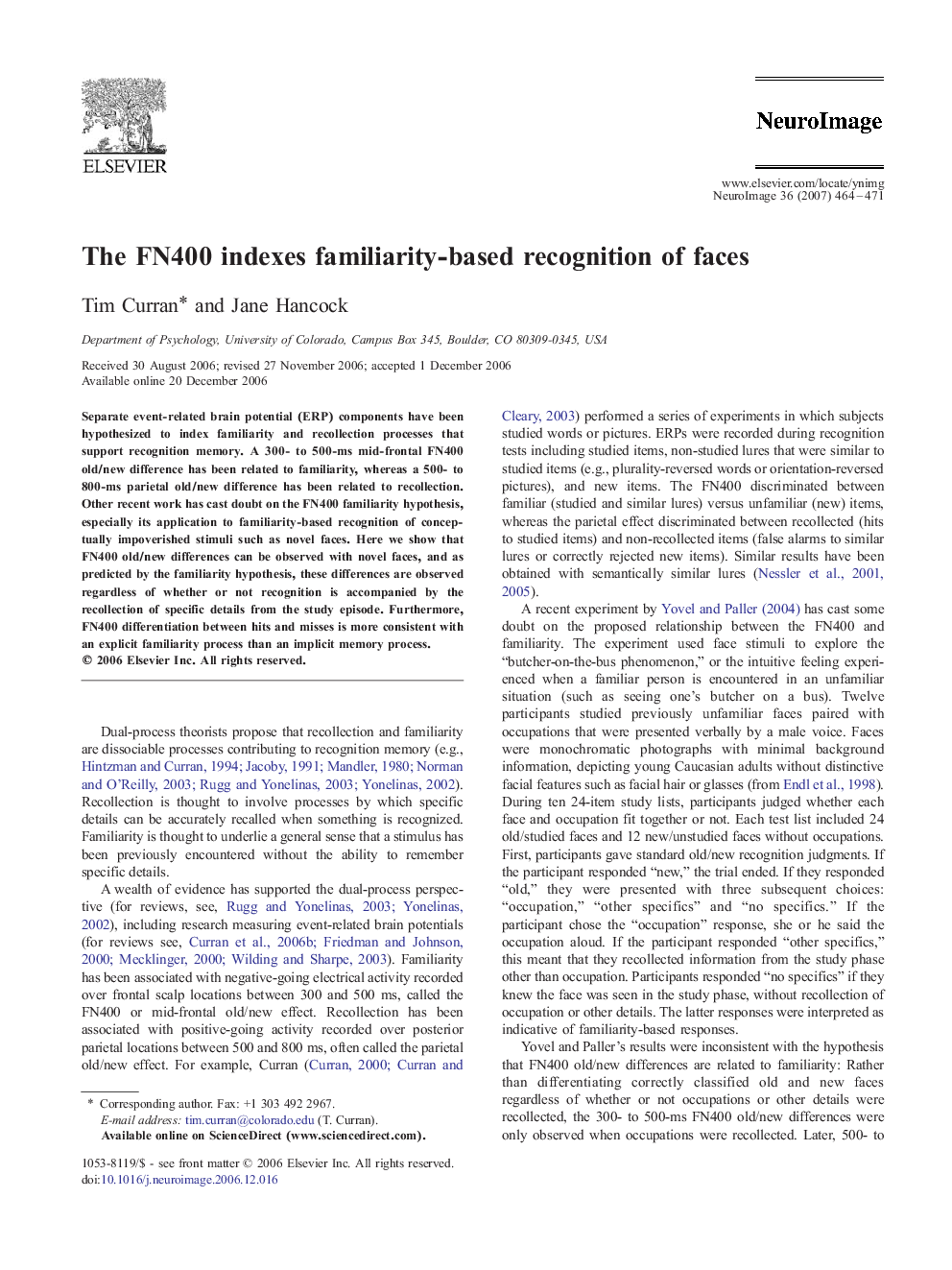| Article ID | Journal | Published Year | Pages | File Type |
|---|---|---|---|---|
| 6039959 | NeuroImage | 2007 | 8 Pages |
Abstract
Separate event-related brain potential (ERP) components have been hypothesized to index familiarity and recollection processes that support recognition memory. A 300- to 500-ms mid-frontal FN400 old/new difference has been related to familiarity, whereas a 500- to 800-ms parietal old/new difference has been related to recollection. Other recent work has cast doubt on the FN400 familiarity hypothesis, especially its application to familiarity-based recognition of conceptually impoverished stimuli such as novel faces. Here we show that FN400 old/new differences can be observed with novel faces, and as predicted by the familiarity hypothesis, these differences are observed regardless of whether or not recognition is accompanied by the recollection of specific details from the study episode. Furthermore, FN400 differentiation between hits and misses is more consistent with an explicit familiarity process than an implicit memory process.
Related Topics
Life Sciences
Neuroscience
Cognitive Neuroscience
Authors
Tim Curran, Jane Hancock,
